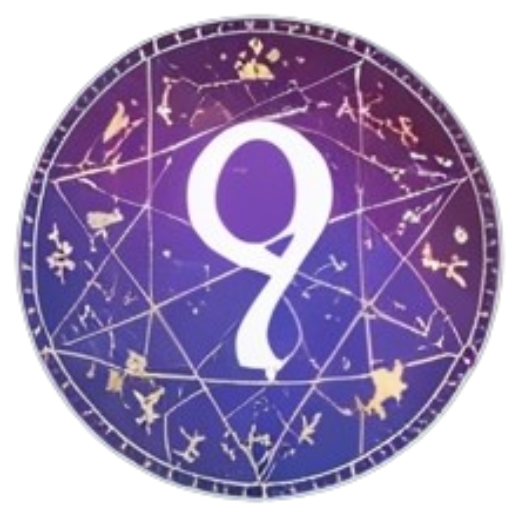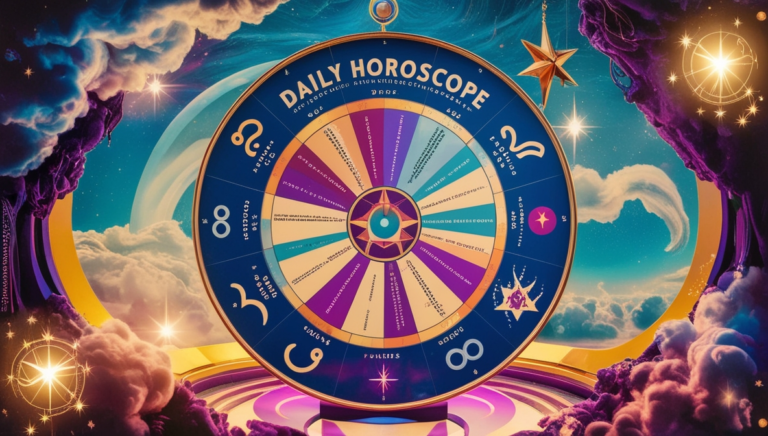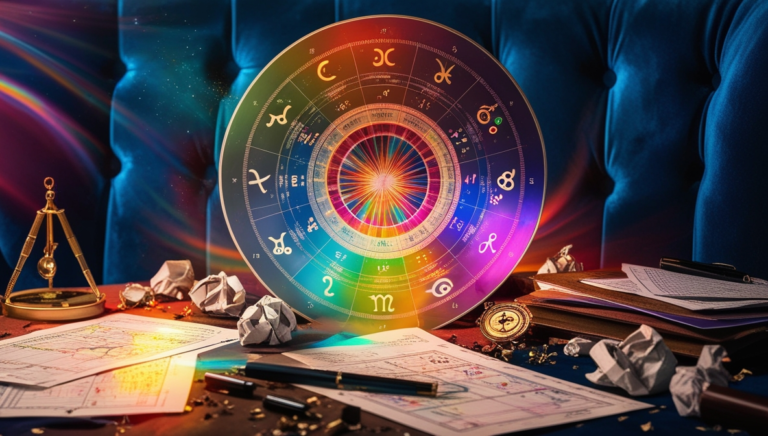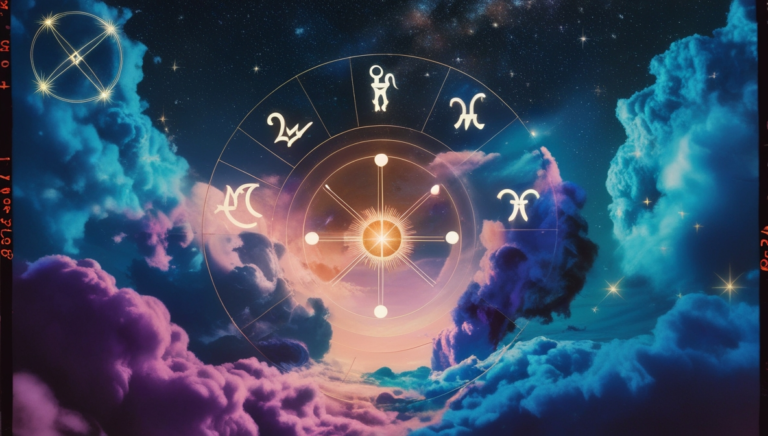
Astrology offers a unique lens through which we can explore our relationships, whether romantic, platonic, or professional. Astrology for compatibility—also known as synastry—is the practice of comparing two birth charts to understand how people connect on a deeper, cosmic level.
When two people’s charts are compared, astrologers can identify areas of harmony and tension by analyzing the interactions between planets, zodiac signs, and houses. This form of compatibility analysis helps individuals gain insight into the dynamics of their relationships, making astrology a popular tool for understanding love and attraction.
How Does Astrology Affect Compatibility?
Astrological compatibility isn’t just about matching sun signs. While sun signs represent your core personality, they are only one aspect of a person’s overall astrological makeup. Other factors like your moon sign (emotions), Venus sign (love and affection), and Mars sign (passion and drive) play significant roles in determining compatibility.
Key areas of focus for astrology compatibility include:
- Sun Sign Compatibility: The sun sign is often a starting point for compatibility analysis. While sun signs can reveal basic personality traits, astrologers look deeper into how two sun signs interact. For instance, fire signs (Aries, Leo, Sagittarius) may find harmony with air signs (Gemini, Libra, Aquarius), as both tend to have dynamic, outgoing energies.
- Moon Sign Compatibility: Since the moon governs emotions and instinctive reactions, its position is crucial for emotional compatibility. If two people have compatible moon signs, they may naturally understand and support each other’s emotional needs.
- Venus and Mars: Venus represents how we express love and affection, while Mars governs desire and passion. A strong Venus-Mars connection between two charts often indicates romantic chemistry and physical attraction.
- House Overlays: The houses in a natal chart represent different areas of life, from love and family to career and spirituality. When someone’s planets fall into significant houses in your chart, they can influence how that person affects your life. For instance, if someone’s Venus falls in your 7th house of partnerships, this indicates a strong potential for a romantic or long-term relationship.
Elements in Astrology Compatibility
Each zodiac sign belongs to one of four elements: fire, earth, air, or water. Understanding how these elements interact is essential for compatibility analysis.
- Fire Signs (Aries, Leo, Sagittarius): Passionate, energetic, and confident. Fire signs often thrive in relationships with air signs, who fuel their adventurous spirit.
- Earth Signs (Taurus, Virgo, Capricorn): Grounded, stable, and practical. Earth signs value security and are often compatible with water signs, who can offer emotional depth and sensitivity.
- Air Signs (Gemini, Libra, Aquarius): Intellectual, social, and communicative. Air signs enjoy relationships with fire signs, who inspire their creativity and excitement.
- Water Signs (Cancer, Scorpio, Pisces): Emotional, intuitive, and sensitive. Water signs often connect deeply with earth signs, who provide stability and a sense of grounding.
ALSO YOU CAN CHECK
Synastry: The Art of Chart Comparison
In astrology, the technique used to measure compatibility between two individuals is called synastry. This method compares the planetary placements of two birth charts to see how they interact. Astrologers examine:
- Aspects Between Planets: In synastry, astrologers focus on how planets from one chart form aspects (specific angles) to planets in another chart. Positive aspects like trines (120° angle) and sextiles (60° angle) create harmony, while challenging aspects like squares (90° angle) can indicate tension or conflict.
- The 7th House of Partnerships: This house is critical for understanding long-term relationships, as it governs marriage, commitment, and partnerships. Planets placed in or affecting this house can reveal potential for lasting connections.
- Composite Chart: Another approach to understanding compatibility is creating a composite chart, which merges two individuals’ charts into one. This chart represents the relationship itself, offering insight into how both individuals experience the connection.
Astrology Compatibility in Love and Romance
For many, the most common question is, «Which zodiac signs are most compatible in love?» While sun sign compatibility can provide initial clues, true romantic compatibility requires looking at the entire chart.
- Soulmates: In astrology, soulmates are often indicated by strong synastry aspects. These include Venus and Mars connections, which reveal romantic attraction, and harmonious moon aspects, which indicate deep emotional understanding.
- Twin Flames: Twin flames are believed to be two halves of the same soul, separated and then reunited in a lifetime. Astrological connections like sun and moon conjunctions (when two planets are closely aligned) can indicate a powerful, transformative relationship.
- Opposites Attract: Astrologically, opposite signs on the zodiac wheel often have a magnetic attraction. Examples include Aries and Libra or Taurus and Scorpio. These relationships can be challenging but also deeply rewarding, as opposites often bring balance to one another.
Using Astrology for Compatibility Beyond Romance
Astrological compatibility isn’t limited to romantic relationships. It can also be applied to:
- Friendships: Understanding your friends’ astrological placements can help you better navigate communication and support. For example, fire and air signs tend to have fun and dynamic friendships, while earth and water signs often form deeply supportive and lasting bonds.
- Family Relationships: Astrology can help improve family dynamics by revealing how different family members’ charts interact. Understanding a child’s moon sign, for instance, can help a parent better nurture and respond to their emotional needs.
- Work and Career: Knowing the astrological traits of your colleagues can help you understand work styles and improve collaboration. Air signs may excel in communication-heavy roles, while earth signs thrive in structured, practical environments.
Astrology Compatibility Tips for Beginners
If you’re new to astrology and want to explore compatibility, here are some tips to get started:
- Know Your Big Three: The sun, moon, and rising signs are often called the «big three» in astrology and provide a comprehensive view of your personality, emotions, and outward behavior. Understanding your own big three and that of a partner can provide a deeper understanding of compatibility.
- Focus on Venus and Mars: In relationships, Venus (love) and Mars (desire) are the key planets to watch. Their interactions in your chart can reveal how you approach love and passion.
- Consider the Elemental Balance: Look at the balance of elements in both charts. Too much fire without grounding earth or too much water without intellectual air can lead to imbalance.
Enhancing Compatibility: Astrology as a Tool for Growth
Astrology isn’t about determining whether a relationship will work or not; it’s about understanding the dynamics and using that knowledge for growth. By learning your partner’s astrological tendencies, you can better appreciate their strengths and navigate challenges. For example, if your partner has a lot of fire energy, you might learn to appreciate their spontaneity and help them stay grounded.









